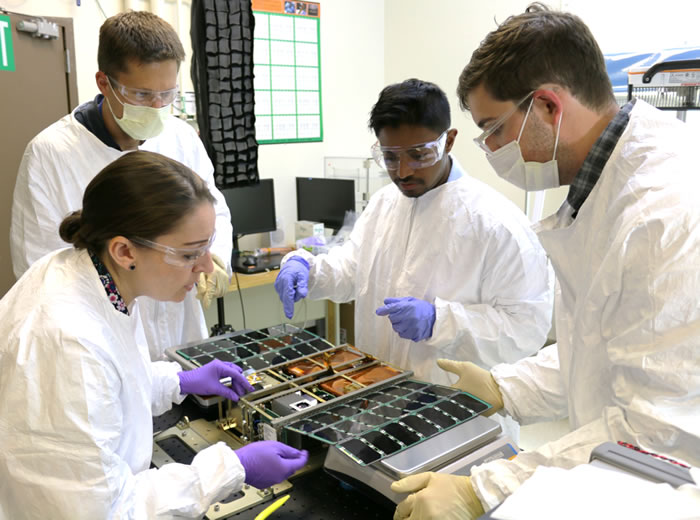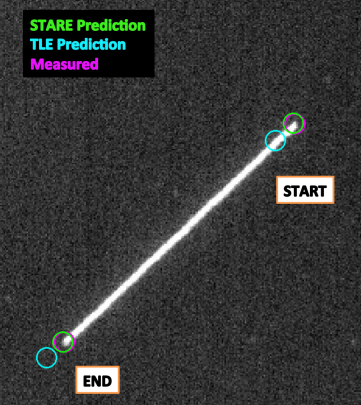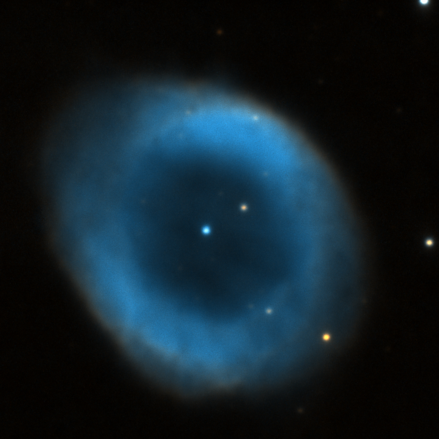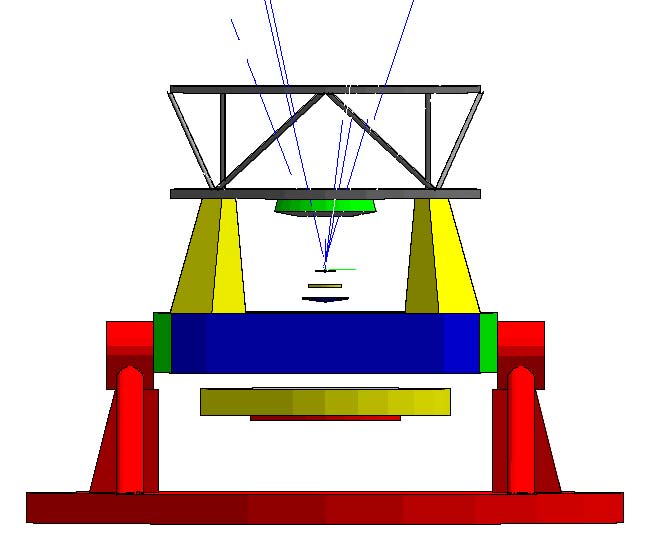Publications
The following is a list of the publications I have taken part in during my career. There is a chance that some of the links will break, so if you'd like a copy of one of these papers and can't get it, just email me.
- Gaussian Mixture Models as Automated Particle Classifiers for Fast Neutron Detectors, B. Blair, C. Chen, A. Glenn, A. Kaplan, J. Ruz, L. Simms, R. Wurtz, Statistical Analysis and Data Mining: The ASA Data Science Journal, July 25, 2019
- Pulse Discrimination with a Gaussian Mixture Model on an FPGA, L. Simms, B. Blair, J. Ruz, R. Wurtz, A. Kaplan, A. Glenn, Nuclear Inst. and Methods in Physics Research, A, Volume 900, p. 1-7, 21 Aug. 2018
- Methodology and Performance Comparison of Statistical Learning Pulse Shape Classifiers as Demonstrated with Organic Liquid Scintillator, R. Wurtz, B. Blair, C. Chen, A. Glenn, A. Kaplan, P. Rosenfield, J. Ruz, L. Simms, Nuclear Inst. and Methods in Physics Research, A, Volume 901, p. 46-55, 1 Sep. 2018
- Government-owned CubeSat Next Generation Bus Reference Architecture, V. Riot, L. Simms et al., TS5, Aug. 7, 2013
- Orbit Refinement with the STARE Telescope, L. Simms et al., Journal of Small Satellites, Vol. 2, No.2, pp. 235-251, Dec. 2013
- The Space-based Telescopes for Actionable Refinement of Ephemeris Mission, V. Riot, W. De Vries, L. Simms et al., SSC13-XI-11, Aug. 16, 2013
- CXBN: A Blueprint for an Improved Measurement of the Cosmological X-Ray Background. L. Simms et al., Proc. SPIE, Vol 8507-44, Aug 15, 2012
- The Cosmic X-Ray Background NanoSat (CXBN): Measuring the Cosmic X-Ray Background using the CubeSat Form Factor, K. Brown et al., Proceedings of the AIAA/USU Conference on Small Satellites, SSC12-VII-6, Aug 12, 2012
- Space-based telescopes for actionable refinement of ephemeris pathfinder mission, L. Simms, W. De Vries, V. Riot, S. Olivier, A. Pertica, B. Bauman, D. Phillion, S. Nikolaev, SPIE Optical Engineering, 51, Jan 19, 2012
- Analysis of Galaxy 15 Satellite Images from a Small-Aperture Telescope. S. Nikolaev, D. Phillion, L. Simms, A. Pertica, S. Olivier, R. Cognion, Proceedings of the Advanced Maui Optical and Space Surveillance Technologies Conference, Sep 13-15, 2011
- Autonomous SubPixel Satellite Track Endpoint Determination for Space-Based Images, L. Simms, Applied Optics, 50, 22, D1-D6, 2011
- Optical Payload for the STARE Pathfinder Mission, L. Simms, V. Riot, W. De Vries, S. Olivier, A. Pertica, B. Bauman, D. Phillion, S. Nikolaev, Proc. SPIE Defense and Security, 8044-05, 2011
- Hybrid CMOS SiPIN Detectors as Astronomical Imagers, Lance Simms, PhD Thesis, Stanford University, October 2009.
- Performance studies of the CMS Strip Tracker before installation, W. Adam et al., Journal of Instrumentation, Vol. 06, 4 P06009, June 2009.
- Stand-alone cosmic muon reconstruction before installation of the CMS silicon strip tracker, CMS Tracker Collaboration, Journal of Instrumentation, Vol. 06, 4 P05004, May 2009.
- Telescope Guiding with a HyViSI H2RG Used in Guide Mode, L. Simms, D. F. Figer, B. J. Hanold, S. M. Kahn, D. K. Gilmore, Proc. SPIE, Vol. 7439, 2009.
- First use of a HyViSI H4RG for astronomical observations, L. Simms, D. F. Figer, B. J. Hanold, D. J. Kerr, D. K. Gilmore, S. M. Kahn, J. A. Tyson, Proc. SPIE, Vol. 6690, 2007.
- Testing and Operation of the SIDECAR ASIC for DUNE and LSST, L. Simms, S. M. Kahn, D. K. Gilmore, S. Seshadri, Technical Report for NASA/JPL, July 2008
- Studies of Atmospheric Turbulence and its Effect on Image Ellipticity, L. Simms, D. Burke, SLAC preprint.
Talks and Presentations
Here are some of the talks and presentations I've given. Some of them are meant to have embedded movies, which are also included below.
Astronomy Talks
- Telescopes for Dummies
- Intro To Astronomy
- Astronomical Photography
- The History of Astronomical Imaging...and Stuff
- Pragmatic Astronomy
- Galaxy Morphology
Other Talks
Movies for the talks
Press
I can't say that I've received any press worth bragging about for the work that I've done. But here are a few articles to summarize some of the work highlighted above in less technical terms.
- Imaging the Universe (1/2008)
- Observing the Universe from Earth and Space (2/2008)
- In Search of the Dark Sky (1/2012)
- Space Cops (1/2014)
More About Me
I can't promise it's completely up-to-date, well-formatted, or well-written, but here's my CV:





